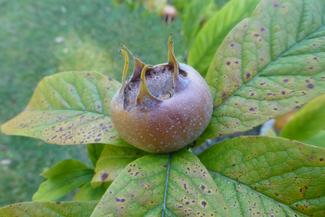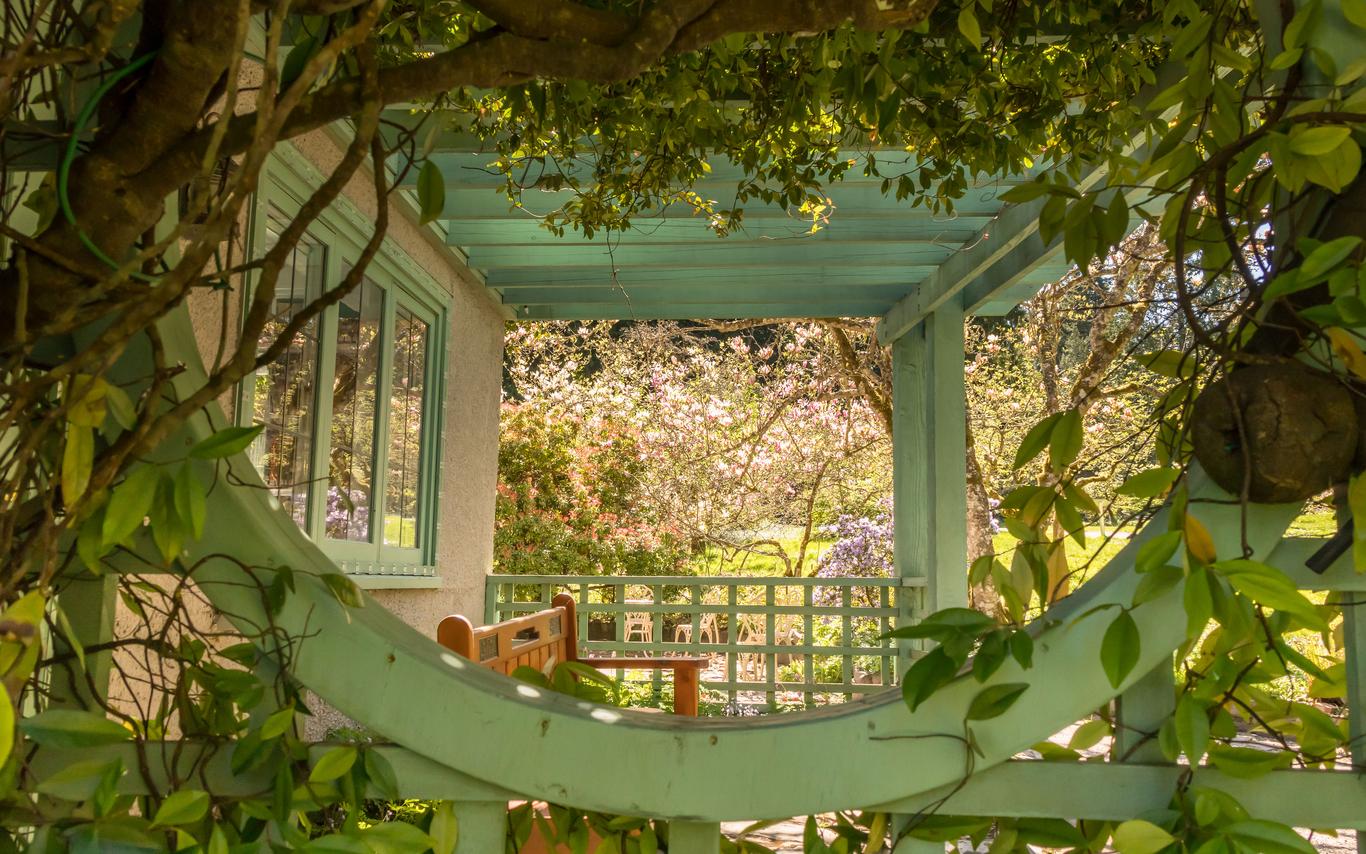Latin name: Mespilus germanica
by Vancouver Island Master Gardeners Association
Medlars make good specimen trees in areas of warm summers and mild winters. They prefer slightly acidic soil and a sunny or slightly shaded spot. They need some pruning in winter for shape and flowering and fruiting. Trees are best planted throughout the winter months. Small trees need to be staked. In spring they will show white to pink-edged flowers which have 5 ovate petals. They are self-fertile and are pollinated by bees. Fruit are harvested in fall.
Medlars were already known to the ancient Greeks and cultivated by the Romans. In medieval times it was a well-known and beloved fruit because of its availability in winter. The fruit are either harvested after a frost or harvested earlier to keep longer. In both cases they need to be "bletted" which means keeping the fruit until very soft and brown. It is then an unusual treat somewhat reminiscent of apple sauce.

Photos courtesy of: Dorothee Kieser.
Attribute | Description |
|---|---|
Form: | Deciduous tree or large shrub |
Foliage type: | Lance-shape to oblong-oval |
Height/Width: | 6m (20 ft) height,; 8 m (25 ft) diameter |
Hardiness Zone: | Hardiness zone 7 |
Exposure: | Full sun or light shade |
Flower colour: | White, sometimes pink-tinged |
Leaf colour: | Dark green turning yellow-brown in fall |
Flower time: | Late spring, early summer |
Preferred soil and Watering: | Moderately fertile, moist but well-drained |
Other: | This plant is best grown as a specimen tree because of its attractive, spreading habit, its fall foliage, and its blossoms. In Europe its 5cm (2") round fruit are used in desserts. |

